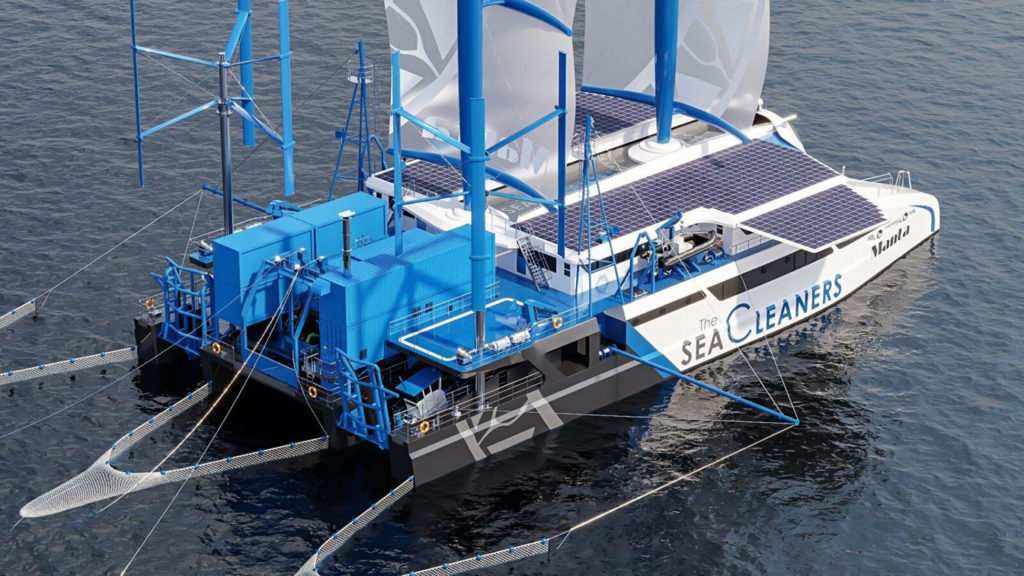Each year, an estimated eight million tonnes of plastic end up in the ocean. According to the UN, if nothing is done, there will be more plastic waste than fish in the oceans by 2050.
Tired of hitting these floating objects during his races and seeing heavenly places turn into landfills, a French ocean adventurer Yvan Bourgnon decided to fight against this global scourge. He and his team have designed Manta, a giant, plastic-eating catamaran powered by renewable energy. The sea vessel literally scoops up plastic garbage and converts it into fuel to help power the boat.
Yvan Bourgnon – who has years of experience career racing sailing boats around the world’s oceans – is the mastermind behind the venture. A steady increase in encounters with floating fields of garbage in the ocean inspired him to start the SeaCleaners project and build Manta, a 56-meter (184 foot) catamaran powered by a combination of advanced sail technology and electric motors.

The giant sailing boat will be the first of its kind capable of collecting, processing, and recovering large quantities of marine plastic waste. Built from low-carbon steel, the Manta features a custom electric hybrid propulsion system that allows maneuvering at low speed for sensitive operations (such as the entry to and exit from ports), as well as waste collections, which are carried out at 2 or 3 knots. Agile and energy-efficient, the Manta can reach a top speed of over 12 knots.
Around 500kW of onboard renewable energy is generated via two wind turbines, 500 square meters of photovoltaic solar panels, two hydro-generators under the boat, and a waste-to-energy conversion unit (WECU). The power supply from renewable energy sources will allow the Manta to operate 75% of the time autonomously, without using fossil fuels, and with a minimal environmental footprint.

Thanks to a unique combination of collection means, the Manta will be able to pick up both floating macro-waste and smaller debris from 10 millimeters upwards and up to one meter deep. Depending on the density and closeness of the layers of waste, the ship can collect between 1 to 3 tonnes of waste per hour, with the objective of collecting 5 to 10,000 tonnes per year.
The Manta is the first self-sufficient workboat capable of processing 90 to 95% of the collected plastic waste whilst at sea. The waste-collecting conveyors – similar to the Ocean Cleanup project’s third-generation Interceptor vessel system – bring the waste on board. A waste sorting unit manually separates the waste according to its type. A waste-to-energy conversion unit then converts the collected waste into electricity through the process of pyrolysis, which, in turn, powers all of the Manta’s electrical equipment. This eco-friendly method emits hardly any CO2 or pollutants into the air.
Moreover, it can host international scientific missions, thanks to its onboard research facilities. 6 to 10 scientists at a time can come aboard the Manta for onboard assignments. The data collected will be completely accessible via Open data.
The Manta will intervene mainly in Asia, Africa, and South America in strategic areas where marine plastic pollution is particularly dense. The vessel will also be able to intervene quickly in polluted areas following a natural or climatic disaster (cyclones, tsunamis, etc.).
A shipyard is yet to be confirmed, but Bourgnon estimated a two year-build for the first model, with delivery scheduled for the end of 2024. The SeaCleaners project joins a surge of new initiatives aimed at clearing the oceans of plastic in recent years, such as the Ocean Cleanup project.
